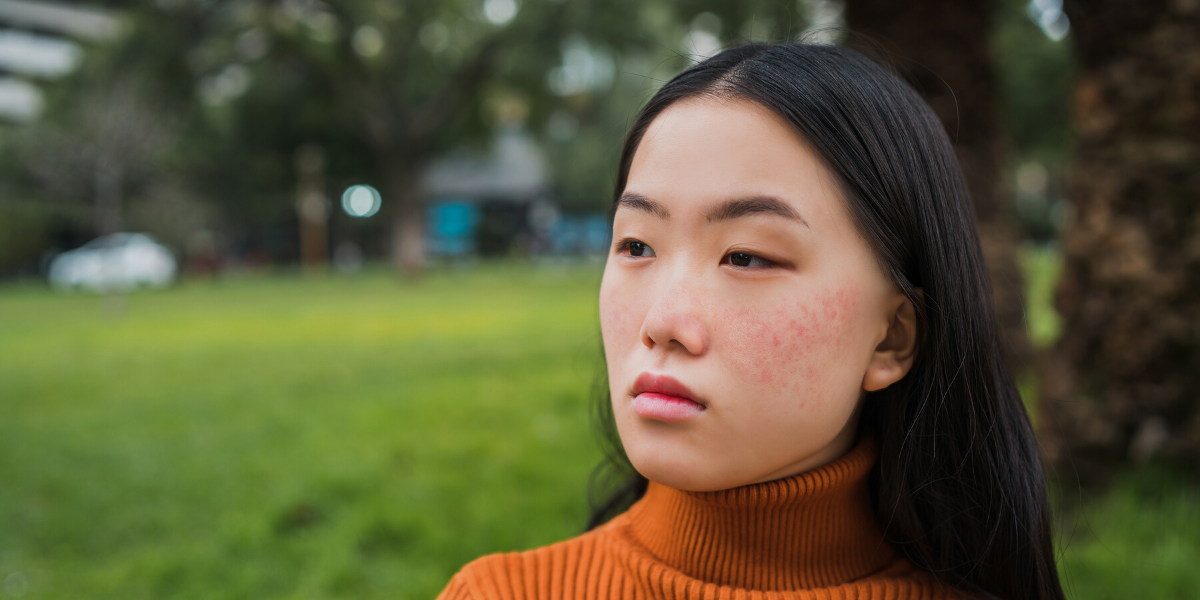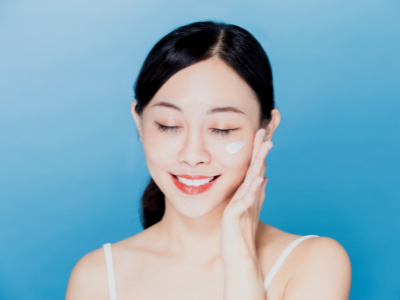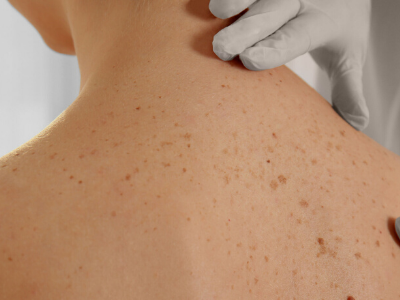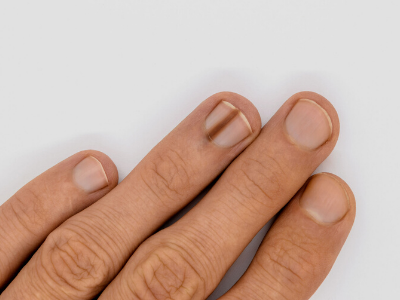Published on 23 January 2022
Rosacea is a chronic inflammatory skin condition that causes redness and raised bumps on the skin – most commonly on the face. According to Dr Liau MeiQi May, Associate Consultant, Division of Dermatology, Department of Medicine, National University Hospital (NUH), the condition is sometimes mistaken for acne, seborrheic dermatitis or facial eczema.
However, rosacea is actually a different type of skin condition, although its cause is not well understood. “Factors such as abnormalities in one ’s immunity, inflammatory reactions to skin microorganisms, ultraviolet light exposure and genetic factors have been identified as potential contributing factors,” Dr Liau explained. She added that rosacea tends to be a chronic condition and usually affects adults between the ages of 30 to 60. It is also more common in middle-aged women with fair skin and can affect adults of all ethnic backgrounds.
Rosacea can occur on the nose, chin, cheeks, forehead and may even affect the eyes.
Some of the common signs and symptoms include:
Persistent redness of facial skin
Tendency to blush easily
Raised red bumps that resemble acne
Telangiectasia (small dilated blood vessels on the skin)
Burning or gritty sensation in the eyes
Rhinophyma (swollen and prominent nose)
Dr Liau explained that there are four sub-types of rosacea.
Erythematotelangiectatic rosacea is a type of rosacea characterised by skin redness, flushing, visible blood vessels
Papulopustular rosacea is a type of rosacea characterised by skin redness, swelling, and acne-like breakouts
Phymatous rosacea is a type of rosacea characterised by skin thickening and tends to affect the nose
Ocular rosacea affects the eyelids, conjunctiva and cornea. It may cause eye dryness, redness and irritation, and cysts may form on the eyelids.
Caring for – and living with – rosacea
Although rosacea is a chronic disease, Dr Liau shared that appropriate management and care can keep the condition under control and help to prevent the condition from worsening.
1. Adopt a gentle skin care regimen and avoid triggers
To improve the signs and symptoms of rosacea, it is important to adopt a gentle skin care regimen. Use a mild cleanser and avoid extreme temperatures to wash your face. You should also avoid harsh mechanical scrubbing and always use sun protection.
2. Use topical therapies where necessary
For patients with mild to moderate rosacea, topical treatments can be helpful. Dr Liau said these include treatments such as topical metronidazole gel, topical ivermectin and topical azelaic acid.
3. If needed, ask your doctor about oral antibiotics
In more severe cases of rosacea, a course of oral antibiotics may be recommended, said Dr Liau. These help to reduce inflammation and are usually taken for four4 to 12 weeks. She added that repeated courses may be necessary for patients with frequent recurrences.
4. Consider Isotretinoin for stubborn cases of rosacea
Patients who fail to respond to topical therapies and oral antibiotics may benefit from oral Isotretinoin. This drug is effective, said Dr Liau, but may cause some side effects such as dry lips and skin, hair loss, abnormal liver function tests, raised lipids, muscle or joint pain and mood disorders. She also cautioned that Isotretinoin is a potent teratogen, so female patients who are sexually active must be counselled on the need for effective contraception.
5. You might benefit from laser and light therapies
Dr Liau noted that Pulsed Dye Laser (PDL) and Intense Pulse Light (IPL) therapy can be useful in treating persistent facial erythema (redness) and telangiectasia (prominent blood vessels). Carbon dioxide lasers can also be used to treat rhinophyma.
6. Learn to cover up with the right concealers
If you wish to mask your symptoms, certain cosmetics may be used to conceal the signs of rosacea. For example, green-tinted foundations can be used to counter redness of the skin. This can be followed by a skin-tone foundation with natural yellow tones and avoiding those with pink or orange hues.
Written in consultation with Dr Liau MeiQi May, Associate Consultant, Division of Dermatology, Department of Medicine, NUH.




